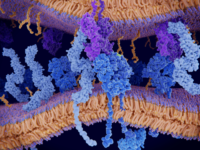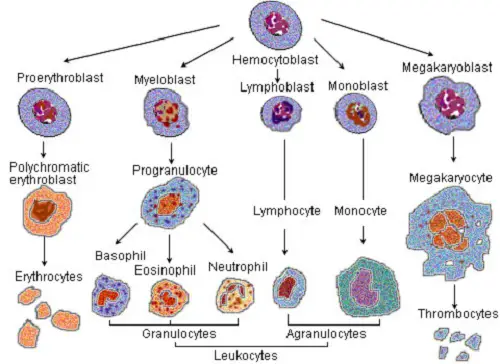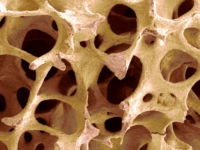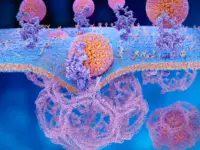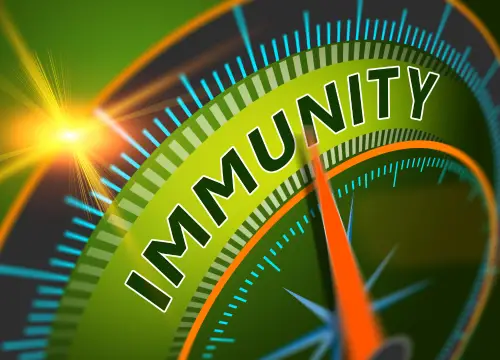
Innate and adaptive immunity are two integral components of the immune system, working synergistically to defend the body against pathogens. Despite their distinct mechanisms and response times, innate and adaptive immunity share several fundamental similarities. This article delves into these commonalities, providing insights into the coordinated defense strategies employed by the immune system.
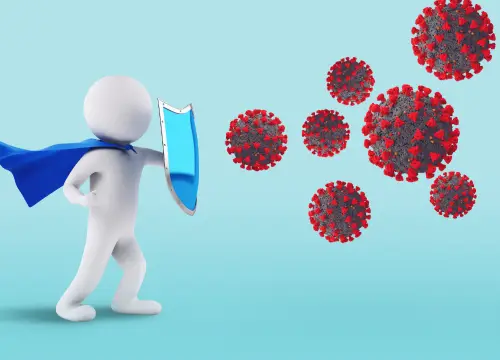
Recognition of Pathogens:
Innate Immunity: Recognizes conserved features of pathogens, such as the presence of specific structures or molecules, through pattern recognition receptors (PRRs).
Adaptive Immunity: Recognizes specific antigens on pathogens through antigen receptors, which are diverse and generated during the development of immune cells.
Elaboration: Both innate and adaptive immunity rely on the recognition of foreign elements. Innate immunity uses PRRs to detect general patterns, while adaptive immunity employs antigen receptors for specific recognition.
Response to Pathogens:
Innate Immunity: Provides an immediate and nonspecific response to a wide range of pathogens, including physical barriers, phagocytosis, and inflammation.
Adaptive Immunity: Offers a delayed but highly specific and targeted response, involving the activation of T cells and B cells to eliminate specific pathogens.
Elaboration: Innate immunity acts rapidly and provides the first line of defense, while adaptive immunity tailors its response to the particular pathogen encountered, offering a more precise and long-lasting defense.
Memory Responses:
Innate Immunity: Lacks memory responses. The response to a pathogen does not confer immunological memory for future encounters.
Adaptive Immunity: Exhibits memory responses, creating immunological memory after an initial encounter with a pathogen, resulting in a faster and more robust response upon reexposure.
Elaboration: Adaptive immunity “remembers” past encounters, leading to a quicker and more effective response upon subsequent exposures. Innate immunity lacks this memory feature.
Cellular Components:
Innate Immunity: Comprises physical barriers (e.g., skin), phagocytic cells (e.g., macrophages), and natural killer (NK) cells.
Adaptive Immunity: Involves T cells (cell-mediated immunity) and B cells (humoral immunity), each with specific functions in the immune response.
Elaboration: Both innate and adaptive immunity involve a variety of cellular components, with innate immunity serving as the immediate, nonspecific response, and adaptive immunity providing a more tailored and specific defense.
Inflammatory Responses:
Innate Immunity: Triggers rapid inflammatory responses as part of its nonspecific defense mechanism.
Adaptive Immunity: Can contribute to inflammation, especially through the activation of certain T cells, but the response is more specific and controlled.
Elaboration: Inflammation is a shared component of both innate and adaptive immunity, playing a crucial role in eliminating pathogens and promoting tissue repair.
In summary, innate and adaptive immunity, though distinct in their mechanisms and response times, work collaboratively to protect the body from a diverse array of pathogens. Understanding the similarities between these immune components provides a comprehensive view of the immune system’s robust defense strategies.
Here’s a simplified comparison table highlighting the similarities between innate and adaptive immunity:
| Aspect | Innate Immunity | Adaptive Immunity |
| Recognition of Pathogens | Recognizes conserved features of pathogens through pattern recognition receptors (PRRs) | Recognizes specific antigens on pathogens through diverse antigen receptors |
| Response to Pathogens | Provides an immediate and nonspecific response, including physical barriers, phagocytosis, and inflammation | Offers a delayed but highly specific and targeted response involving T cells and B cells |
| Memory Responses | Lacks memory responses. No immunological memory is generated after an encounter | Exhibits memory responses, creating immunological memory for faster and more robust future responses |
| Cellular Components | Comprises physical barriers (e.g., skin), phagocytic cells (e.g., macrophages), and natural killer (NK) cells | Involves T cells (cell-mediated immunity) and B cells (humoral immunity) |
| Inflammatory Responses | Triggers rapid inflammatory responses as part of the nonspecific defense mechanism | Can contribute to inflammation, but the response is more specific and controlled |
| Specificity of Response | Nonspecific response that acts against a wide range of pathogens | Highly specific response tailored to the particular pathogen encountered |
| Timing of Response | Immediate response, providing the first line of defense | Delayed response, takes time to activate T cells and B cells |
| Role in Immune Memory | Lacks the ability to generate immunological memory | Generates immunological memory for a more effective response upon reexposure |
Note: This table provides a concise overview of the similarities between innate and adaptive immunity. The actual immune response involves complex interactions and may vary based on the specific context and pathogens encountered.
Frequently Asked Questions (FAQ) on Innate and Adaptive Immunity:
Q1: What is the primary difference between innate and adaptive immunity?
A1: The main difference lies in their specificity and memory responses. Innate immunity provides immediate, nonspecific defense, while adaptive immunity offers a delayed but highly specific and memory-based response.
Q2: How do innate and adaptive immunity work together in the immune response?
A2: Innate immunity acts as the first line of defense, providing immediate, nonspecific responses. Adaptive immunity follows, offering a specific and targeted response with the ability to create immunological memory.
Q3: Do both innate and adaptive immunity involve the recognition of pathogens?
A3: Yes, both innate and adaptive immunity involve the recognition of pathogens. Innate immunity uses pattern recognition receptors (PRRs), while adaptive immunity uses antigen receptors on T cells and B cells.
Q4: What are the primary cellular components of innate immunity?
A4: Innate immunity involves physical barriers (e.g., skin), phagocytic cells (e.g., macrophages, neutrophils), and natural killer (NK) cells.
Q5: How does adaptive immunity recognize specific pathogens?
A5: Adaptive immunity recognizes specific antigens on pathogens through the antigen receptors of T cells and B cells, which are highly diverse and generated during their development.
Q6: Can innate immunity provide immunological memory?
A6: No, innate immunity does not provide immunological memory. Each encounter with a pathogen results in a similar nonspecific response.
Q7: How do memory responses in adaptive immunity contribute to future immune responses?
A7: Memory responses in adaptive immunity create immunological memory, leading to a faster and more robust response upon reencounter with the same pathogen.
Q8: Are both innate and adaptive immunity involved in inflammatory responses?
A8: Yes, both innate and adaptive immunity can contribute to inflammatory responses. Innate immunity triggers rapid inflammation, while certain T cells in adaptive immunity can also contribute.
Q9: Which type of immunity offers the first line of defense against pathogens?
A9: Innate immunity provides the first line of defense with its immediate, nonspecific responses, acting before adaptive immunity is fully activated.
Q10: Can defects in either innate or adaptive immunity lead to health problems?
A10: Yes, deficiencies or dysregulation in either innate or adaptive immunity can lead to various health problems, including increased susceptibility to infections and autoimmune disorders.
Q11: Are vaccinations primarily designed to activate innate or adaptive immunity?
A11: Vaccinations primarily aim to activate adaptive immunity by exposing the immune system to harmless forms of pathogens or their components, allowing the generation of immunological memory.
Q12: How do innate and adaptive immunity contribute to the body’s overall defense against infections?
A12: Innate immunity provides immediate, nonspecific defenses against a wide range of pathogens. Adaptive immunity offers a more specific, targeted response tailored to the particular pathogen, creating long-lasting immunological memory.
Q13: Can innate immunity protect the body against a variety of pathogens?
A13: Yes, innate immunity is nonspecific and can provide protection against a wide range of pathogens, including bacteria, viruses, and fungi.
Q14: Are both innate and adaptive immunity present from birth?
A14: Innate immunity is present from birth and provides immediate protection. Adaptive immunity develops over time, becoming more specific and effective with each encounter with pathogens.
Q15: How do innate and adaptive immunity contribute to the clearance of infections in the body?
A15: Innate immunity acts quickly to contain and limit the spread of infections, while adaptive immunity provides a specific response to eliminate the pathogens and create memory for future protection.
Q16: Can innate and adaptive immunity be influenced by external factors, such as lifestyle or nutrition?
A16: Yes, external factors like lifestyle, nutrition, and overall health can influence the function of both innate and adaptive immunity. A healthy lifestyle can support optimal immune function.
Q17: Can the immune system distinguish between self and non-self in both innate and adaptive immunity?
A17: Yes, both innate and adaptive immunity have mechanisms to distinguish between self and non-self, preventing the immune system from attacking the body’s own cells and tissues.
Q18: Do innate and adaptive immunity play a role in cancer surveillance?
A18: Yes, both innate and adaptive immunity contribute to cancer surveillance. Immune cells can recognize and eliminate cancerous cells, and certain adaptive immune responses can be harnessed for cancer immunotherapy.
Q19: Are there ongoing research efforts to better understand the interactions between innate and adaptive immunity?
A19: Yes, ongoing research aims to deepen our understanding of how innate and adaptive immunity interact and how their coordination can be leveraged for therapeutic interventions.
Q20: Can innate and adaptive immunity be enhanced through medical interventions?
A20: While innate immunity is generally nonspecific, certain medical interventions, such as vaccines, aim to enhance and optimize the specific responses of adaptive immunity for long-term protection against infections.

